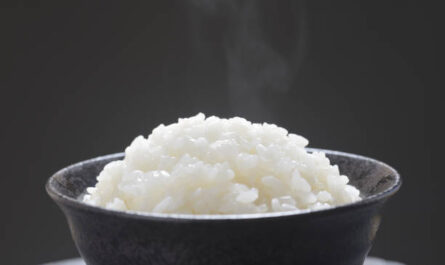Cooking enthusiasts and sushi lovers alike are often on the hunt for new and innovative ways to enjoy their favorite ingredients. One such culinary adventure is making risotto with sushi rice. While traditional risotto is made with Arborio rice, using sushi rice can yield a deliciously creamy and unique dish. In this article, we will explore the fascinating world of risotto made with sushi rice, offering tips, techniques, and insights into how this dish can become a staple in your kitchen.

What is Sushi Rice?
Before diving into the process of making risotto, its essential to understand what sushi rice is. Sushi rice, also known as Shari or Sumeshi, is a short-grain rice that is typically used in Japanese cuisine, particularly in sushi making. This rice is known for its sticky texture and slightly sweet flavor, making it a perfect candidate for a creamy risotto.
To learn more about the origins of sushi rice, check out this informative guide on the origin of sushi rice.
Why Use Sushi Rice for Risotto?
Using sushi rice for risotto offers several benefits. Firstly, sushi rice has a high starch content, which is crucial for achieving the creamy texture that risotto is famous for. Additionally, its small, plump grains absorb flavors well, ensuring that your risotto is bursting with taste.
The Unique Texture
The stickiness of sushi rice contributes to a unique texture in risotto, providing a different mouthfeel compared to the traditional Arborio rice. This can be particularly appealing to those who enjoy a creamier and slightly denser consistency in their risotto.
Flavor Absorption
Sushi rices ability to absorb flavors is another reason it works well in risotto. Whether youre using a rich chicken broth or a delicate vegetable stock, sushi rice will soak up the flavors beautifully, resulting in a dish that is flavorful and satisfying.
How to Make Risotto with Sushi Rice
Creating risotto with sushi rice is a straightforward process. Below is a step-by-step guide to help you make this delicious dish at home.
Ingredients Needed
- 1 cup of sushi rice
- 4 cups of chicken or vegetable broth
- 1/4 cup of white wine
- 1 onion, finely chopped
- 2 cloves of garlic, minced
- 2 tablespoons of olive oil
- 1/2 cup of grated Parmesan cheese
- Salt and pepper to taste
Cooking Instructions
- Start by heating the olive oil in a large pan over medium heat.
- Add the chopped onion and garlic, sauting until they are translucent.
- Add the sushi rice to the pan, stirring to coat the grains in the oil.
- Pour in the white wine, stirring until it is mostly absorbed by the rice.
- Gradually add the broth, one cup at a time, stirring frequently. Allow each addition of broth to be absorbed before adding the next.
- Continue this process until the rice is tender and creamy, which should take about 20 minutes.
- Stir in the grated Parmesan cheese, and season with salt and pepper to taste.
- Serve hot, garnished with additional Parmesan cheese if desired.
Tips for Perfecting Your Risotto
Making risotto is both an art and a science. Here are some tips to ensure your risotto with sushi rice turns out perfectly every time.
Use Warm Broth
Using warm broth helps the rice cook evenly and prevents the temperature of the dish from dropping too much as you add the liquid. Keep your broth simmering on a separate burner as you cook.
Consistent Stirring
Frequent stirring is crucial to releasing the starches from the rice, creating that desired creamy texture. However, be careful not to over-stir, as this can break down the rice grains.
Pairing Ideas for Sushi Rice Risotto
Now that youve mastered the art of making risotto with sushi rice, lets explore some pairing ideas to enhance your dining experience.
Seafood Pairings
Given the Japanese origins of sushi rice, seafood pairings such as shrimp, scallops, or crab can complement the dish beautifully. Consider integrating these elements into your risotto or serving them on the side.
Vegetarian Options
For a vegetarian twist, consider adding sauted mushrooms, peas, or asparagus to your risotto. These additions not only add flavor but also provide a pop of color to your dish.
Nutritional Benefits of Sushi Rice
Sushi rice isnt just a culinary delight; it also offers several nutritional benefits. It is a good source of carbohydrates and provides energy to fuel your day. Furthermore, when prepared with healthy ingredients, risotto with sushi rice can be a nutritious addition to your meal plan.
Exploring Other Uses for Sushi Rice
If you find yourself with extra sushi rice on hand, consider exploring other delicious recipes. From sushi rolls to rice bowls, sushi rice is incredibly versatile and can be used in a variety of dishes. For more ideas, read about sushi rice in Japanese cuisine.

FAQs About Risotto with Sushi Rice
Can you substitute sushi rice for Arborio rice in risotto?
Yes, sushi rice can be substituted for Arborio rice in risotto. While the texture will differ slightly, sushi rices high starch content makes it an excellent alternative.
What is the best broth to use for risotto?
Both chicken and vegetable broth work well for risotto. The choice depends on your flavor preference and dietary needs.
Can I make risotto with sushi rice in advance?
Risotto is best enjoyed fresh, but it can be stored in the refrigerator for up to two days. Reheat it gently on the stove, adding a bit of broth to restore its creamy consistency.
For more information on rice varieties, visit the culinary pro.
This article contains affiliate links. We may earn a commission at no extra cost to you.



